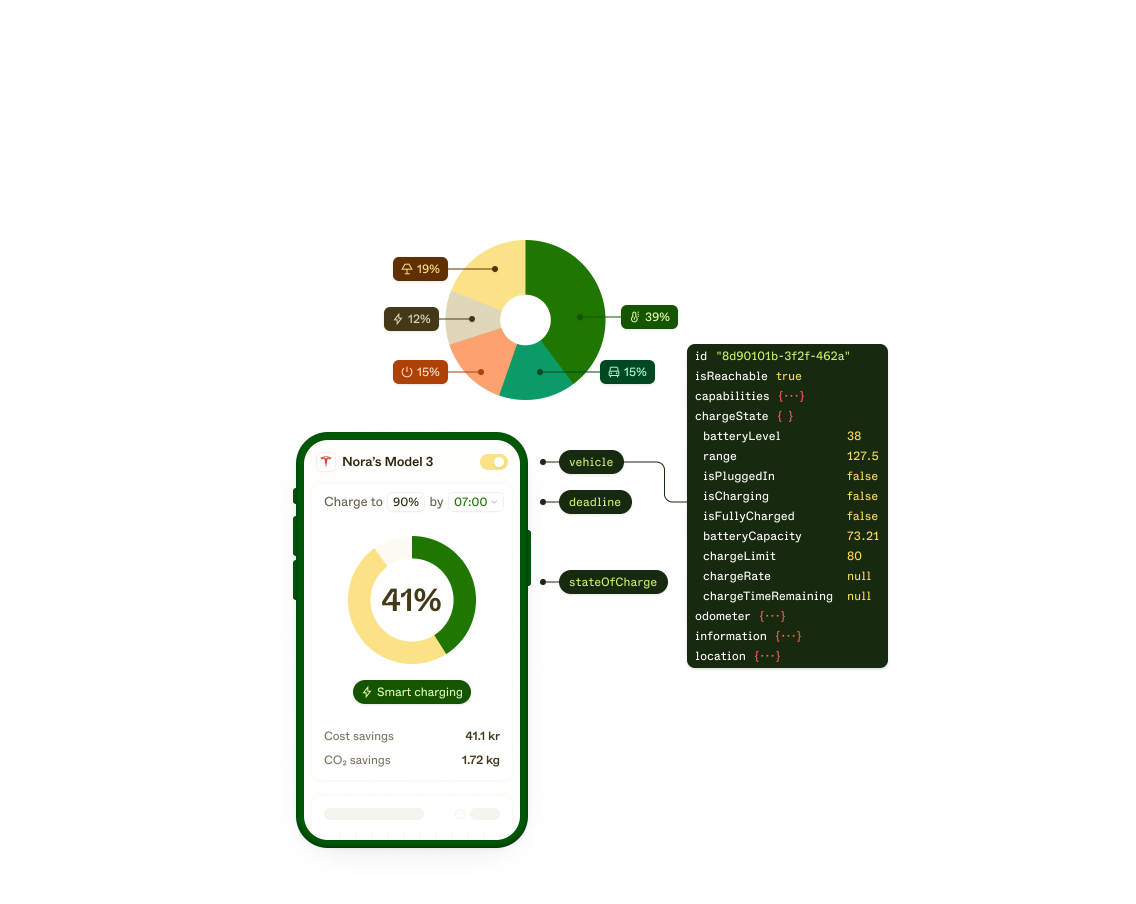How we use APIs to unlock collaboration across the energy system

Electrification is changing our energy system. While it’s becoming greener, it’s also becoming more complex, with a variety of different entities, technologies, and standards at play. It’s increasingly challenging to keep them all operating in harmony to balance electricity supply and demand.
To address this challenge, we need to build demand-side solutions that allow for more efficient energy management. Electric vehicle (EV) smart charging, virtual power plants and more empower consumers to participate in the energy transition, and help accelerate our progress towards Net Zero.
But without interoperability and open access across the energy system, energy innovators can’t create the solutions consumers need, or scale them fast enough.
APIs provide access to energy device data
Application Programming Interfaces (APIs) solve this problem by enabling connection and communication between all the different parts of the energy system. They essentially act as a pathway through which data can travel securely.
Every 4G-connected energy device has its own API. This sends data back and forth between the energy device and the proprietary app (like a Tesla and the Tesla app). With the help of this API, end-users can enjoy lots of useful functions in the app, like understanding the performance of their device, or even controlling it remotely.
As the market for energy devices matures, and they enter our homes in even greater numbers, innovators are busy thinking of ways to make them even more valuable. Many are working on demand-side energy management solutions, which require access to device data.
The trouble is, this data is very difficult for third-party innovators to extract. They have to build and maintain integrations with every single type of energy device, and work around the differences in functionality that each API provides.
Energy device APIs diverge significantly across and within categories. That’s because it’s a nascent field, so guidelines and best practices haven’t yet been established. Device manufacturers have different approaches to interoperability, and the APIs themselves are at varying levels of maturity. Some lack capabilities that third parties need, such as start and stop charging for EVs, or a way for end users to grant access to their device data.
Enabling collaboration across the energy system
Enode was created to solve these challenges and streamline the process of integrating with energy devices. Today, we unify 800 energy device APIs into one integration, with more being added every day.
This makes it faster, easier and more efficient for third-party developers to access the data they need.
This makes life easier for energy device manufacturers, too. They want to create demand for their products by providing the most value and the best user experience. In some cases, that means letting third-party specialists create complementary apps and services. Maintaining individual integrations with each of those third parties would be complex and expensive, and pull focus from their core expertise.
By unifying and standardizing energy APIs and data, Enode encourages collaboration across the ecosystem, and removes barriers to vital innovation.
Facilitating interoperability between energy devices and apps means consumers can choose the solution that offers them the most value, rather than being locked into just one. We think that’s important: end-users should own and control their device data, and all companies should compete on equal terms to deliver the best user experience.
The API landscape is changing
The importance of interoperability is starting to be recognized across the energy industry. Several leading energy device manufacturers are already opening up their APIs and prioritizing interoperability. They understand the potential value it offers, and while others are still navigating the changing landscape, it’s likely they’ll be encouraged to move towards a more open system, too.
The introduction of the EU Data Act and other regulations means the whole ecosystem is on the cusp of major change. Soon, high-quality APIs that enable collaboration will be table stakes - and that’s to the benefit of everyone.
Unlocked from siloes, energy device data will become an important driver of the green energy transition, equipping end-users with the solutions they need to make a positive impact.
As the saying goes, “if you want to go far, go together.” We look forward to seeing how the evolution of APIs across the energy system will help us all work better together, and make even bigger strides towards a clean energy future.
